Visual Art Types: Diverse Expressions of Creativity
Wondering what visual art is all about? Buckle up for a ride into the realm of sheer creativity! Visual art is not just a bunch of fancy paintings; it is a wild adventure filled with various forms, styles, and mind-blowing techniques. So, let us break it down and explore the vibrant world of visual art forms and cool examples.
Unleash Your Creative Vision with the Power Trio of Visual Arts
The term "visual arts" refers to artistic creations that are visible, like paintings or sculptures, even if the broader definition of "the arts" include much more, including theater, music, design, and painting. Three categories can be used to group these visual arts forms: fine art, commercial, and decorative. There are subcategories within each of these visual art forms, and they might be representational, abstract, or non-objective.
Broader visual art categories include paintings, sculptures, drawings, printing, ceramics, photography, videography, film, graphical or commercial styling, handicrafts, and architecture. Let us delve into the exploration of diverse types of visual arts, examining various artistic forms and providing illustrative examples within the realm of visual expression.
Elevating Creativity: the World of Fine Art
Fine art is defined as an artistic medium that is primarily produced for their aesthetic value. This idea distinguishes and elevates fine art beyond commercial and decorative arts, which also have a practical function. High art allows the complete expression and presentation of an artist's creativity, independent of practical or commercial considerations like utility. In contrast to the seven different areas of art that make up the fine arts, the fine visual arts have historically only included three: sculpture, painting, and architecture.
The term "fine arts" found its roots during the Renaissance, a distinction setting these forms apart from the burgeoning realms of commercial design and artisan crafts. It's crucial to grasp that labeling art as "fine" doesn't pass judgment on quality; instead, it acknowledges the meticulous technique and unwavering integrity within the discipline.
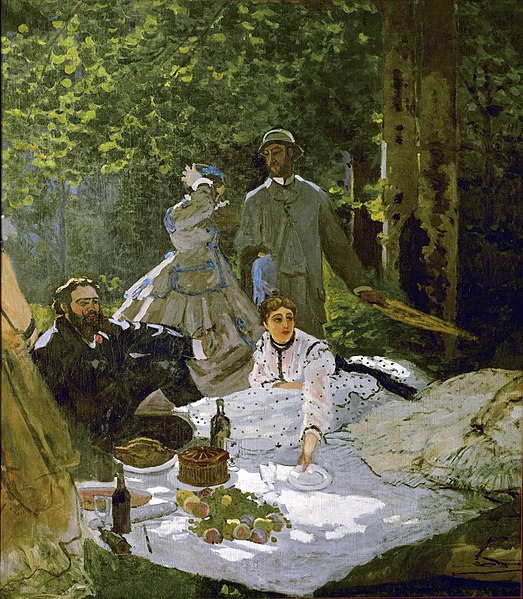
Le Déjeuner Sur L’herbe (1866) By Claude Monet
Exceptional visual art doesn't always fit the fine art mold, as various cultures distinguish between "higher" and "lower" arts. Sculptures, paintings, and architectural wonders command the stage as the "major arts," while decorative or commercial genres find their place in the realm of "minor arts."
Within the dynamic tapestry of visual arts, architecture stands as a pragmatic yet aesthetically charged form. However, not every structure merits the title of fine architecture; it must embody both beauty and ingenuity. Esteemed fine artists often ascend to greater heights of recognition compared to their commercial counterparts, with artworks from antiquity to the Renaissance, like those of Michelangelo and da Vinci, basking in timeless acclaim.
Venturing into the 1800s, artistic movements such as Impressionism and Expressionism ushered in a new wave of fine painters. Icons like Vincent Van Gogh, Pablo Picasso, Jackson Pollock, Umberto Boccioni, and Claude Monet shaped the narrative of fine art. In contemporary spheres, artists like Jeff Koons, David Kracov, Yayoi Kusama, Barbara Kruger, and Damien Hirst redefine the contours of fine art, drawing inspiration from diverse visual forms. Their unique, uninhibited creativity positions modern fine artists at the avant-garde of the artistic frontier, perpetuating the legacy of fine art in the ever-evolving tapestry of creativity.
Art in Everyday Things: Decorative Art

Bouquet Of Lilies Clock 01 By Shakko
In the vast realm of artistic expression, decorative arts often find themselves overshadowed, quietly fusing aesthetic allure with practical functionality. The terms "decorative arts" and "crafts" dance interchangeably, both orchestrating the creation of objects that seamlessly marry attractiveness with utility. Navigating the intricate landscapes of interior spaces and design, decorative arts carve their niche, with architecture typically taking a backseat. While these arts may include everyday items, they stand distinguished from the impersonal realm of mass-produced replicas.
An object earns its stripes as decorative art when it emerges from the hands of a skilled craftsperson, a testament to meticulous craftsmanship. Delving into the diverse techniques of decorative arts unveils a tapestry of skills – from the delicate nuances of pottery and glassware to the precision of carpentry, the tactile warmth of fabrics, the intricate dance of enamel work, and the transformative magic of metalworking. Each medium, a universe in itself, further unfolds into specialties such as dressmaking, wall tapestries, basket weaving, needlework, and the creation of interior materials.
Woven into the fabric of global artistic heritage, decorative arts boast illustrious figures like textile designer William Morris and craftsman Peter Carl Fabergé. Despite residing in the shadows of their counterparts in painting or sculpture, decorative artists play a vital role, often unsung, in shaping the narratives and histories of societies, both past and present. As we peel back the layers of this enigmatic world, we discover that decorative arts are not just about crafting objects; they're about crafting stories, weaving the intricate threads of beauty and functionality into the rich tapestry of human experience.
The Realm of Commercial Artistry
In the realm of creative endeavors, commercial art, much like decorative arts, marries utilitarian functionality with aesthetic appeal. It stands as an artistic service strategically crafted for financial gain, particularly within the vast landscape of marketing. At its core, commercial art strives to captivate audiences and propel sales for companies, products, and ideas, making it a key player in the corporate communication arena.
The diverse spectrum of commercial arts includes graphic design, photography, illustrations, animations, printing, broadcasting, dressmaking, visual effects, product engineering, and motion graphics. This form of artistic expression finds its home in an array of mediums, spanning publications, websites, applications, television, retail displays, and product packaging. While it thrives in contemporary media, commercial art has been a stalwart force in advertising for centuries, adopted not only by businesses but also by governmental and military bodies to convey essential messages.
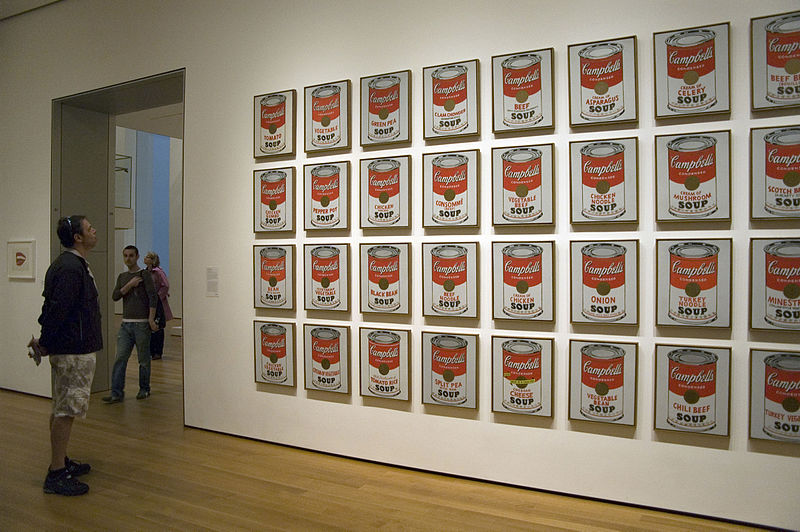
Campbell’s Soup Cans (1962) By Andy Warhol
Iconic examples of commercial art include London's distinctive Tube logo, the early allure of Coca-Cola advertising, and Andy Warhol's iconic Campbell's soup advertisements. Commercial artists, whether hired or commissioned, stand as creators of visual narratives for paying clients. Unlike their counterparts in fine arts, commercial artists often navigate within the parameters of a brief but may still infuse their work with artistic flair, producing experimental and innovative commercial art. Many avant-garde painters, rising to prominence during the Art Deco, Art Nouveau, and Pop Art eras, initiated their careers as commercial artists. Figures like Andy Warhol, Norman Rockwell, Alphonse Mucha, and Takashi Murakami exemplify the rich legacy of commercial painters.
Some artists traverse the boundary between commercial and fine art, challenging preconceptions and dismantling the perceived exclusivity of fine arts. Andy Warhol, for instance, began his artistic journey in the commercial realm, crafting pieces for companies like Campbell's Soup and Brillo before ascending to fine art acclaim. Contemporary artists like Takashi Murakami further blur these boundaries, seamlessly integrating styles from "low" commercial arts, such as anime, into their fine art creations.
Decoding Art: What Defines Its Three Categories?
In the world of visual arts, creations fall into three main categories: Representational art, Abstract art, and Non-Objective art. This simple framework helps understand and discuss artistic expressions, neatly classifying each piece within one of these overarching categories.
Capturing the Essence: Representational Art Explored
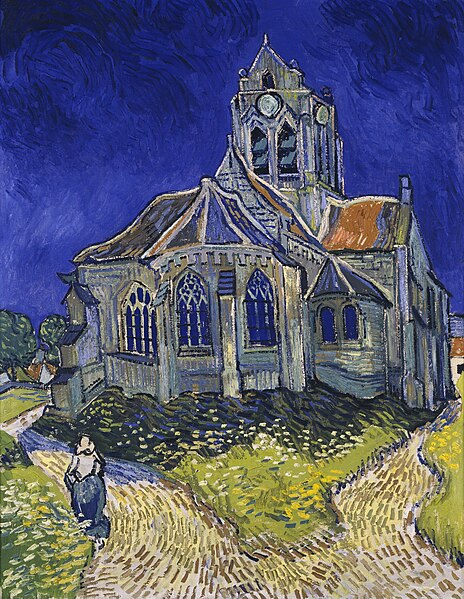
Vincent Van Gogh - The Church In Auvers-sur-oise
In the vast landscape of artistic expression, representational art takes a prominent place. This category, featuring plainly recognized or identifiable subjects, stands as the bedrock of universally recognized artistic forms. Unlike its relatively younger counterparts, non-objective and abstract art, representational art holds an unparalleled accessibility, resonating across diverse audiences. Much of the artistic heritage from ancient and classical eras finds its home within the folds of representational art.
Crucial to understand is that representational art, while portraying actual objects, doesn't demand hyper-realism. Diverging from the precision of photography, it embraces a unique freedom, unbound by the obligation to replicate subjects faithfully. Among the luminaries who have carved their legacy in the field of representational art are Vincent Van Gogh, Michelangelo, Leonardo da Vinci, Edward Hopper, and Frida Kahlo. These artists weave stories through the familiar, offering a nuanced perspective that transcends mere replication.
Unveiling the Essence of Abstract Art
Abstract art, a departure from the ordinary, draws inspiration from reality but ventures into unconventional realms, reshaping our perceptions of the familiar. It plays with lines, forms, and colors to present subjects in ways that challenge our everyday viewpoints. Subcategories such as Cubism, Minimalism, and Precisionism add nuances to this artistic exploration. Originating from the Impressionists' break from realism, abstraction emerged as a dynamic force in the late nineteenth century.
As the world embraced abstract art in various forms, artists adopted a more intellectual approach to their craft. This shift is exemplified in Magritte's "The Treachery of Images" (1939), where the phrase "This is not a pipe" underscores a painting of a pipe, emphasizing that the artwork is a representation, not the actual object. This era marked a shift where artists perceived paintings as images, introducing a new form of intellectual expression.
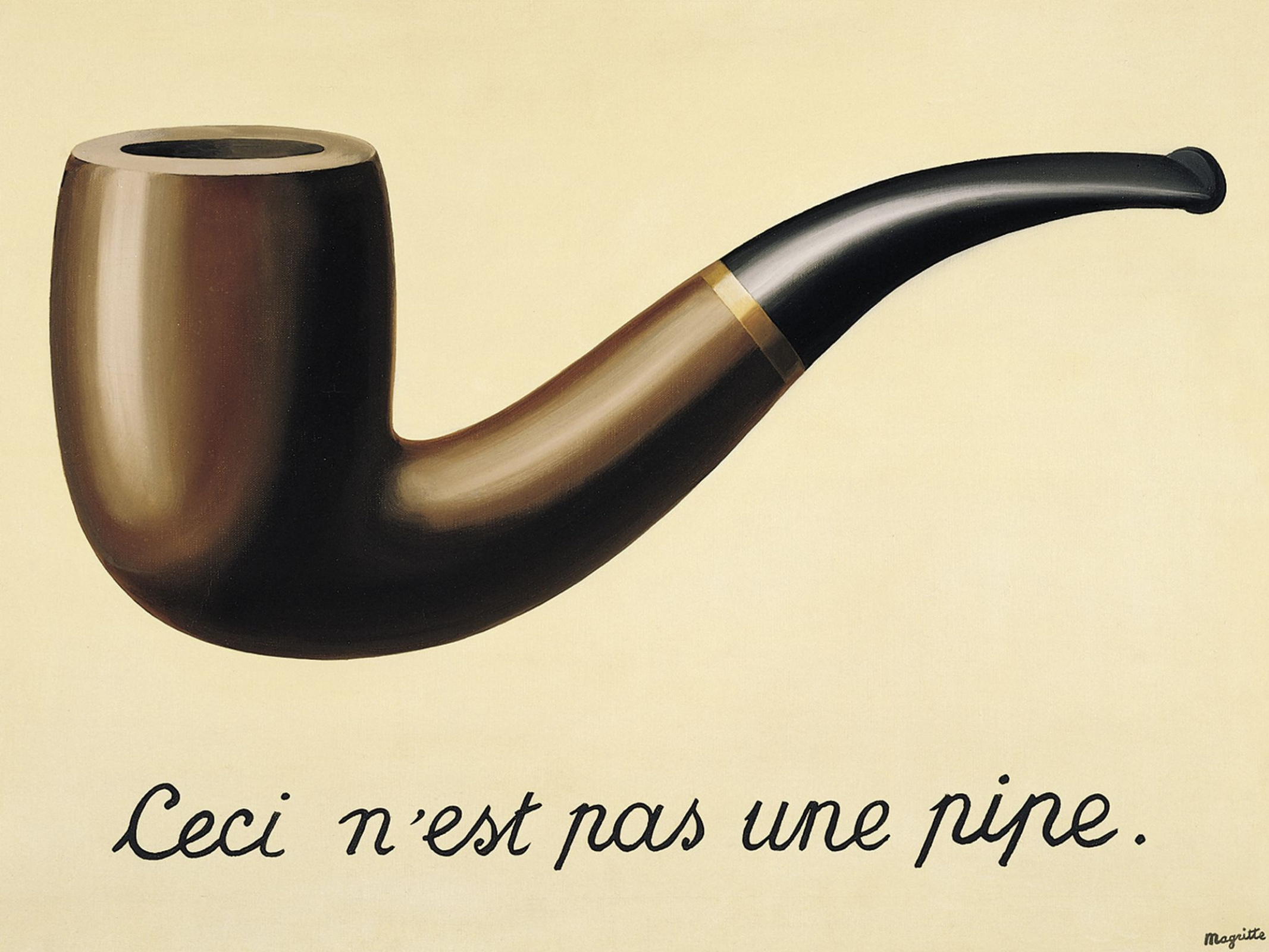
Magritte's "The Treachery Of Images" (1939)
Distinguishing between abstraction and non-objective art may pose a challenge, with the key difference lying in the subject matter. If the artist starts with a topic from reality, the result is considered abstract. Despite its growing popularity, abstraction, a relatively young art form at around 200 years old, retains an air of mystery. Notable abstract painters like Mark Rothko, Henri Matisse, Georges Braque, and Jasper Johns contribute to the evolving canvas of this dynamic and somewhat enigmatic artistic realm.
Abstracting Reality: The Enigma of Non-Objective Art
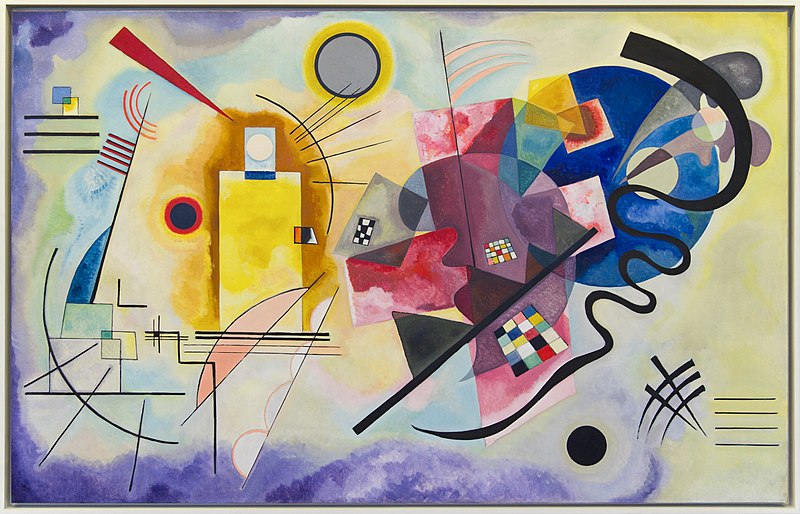
Jaune-Rouge-Bleu (1925) By Wassily Kandinsky
Art that is non-objective never strays from reality. It is not grounded in reality, which sets it apart from abstraction. In contrast, non-objective art uses the elements, mediums, and ideas of art to create visually striking pieces. Non-objective artists include Piet Mondrian, Wassily Kandinsky, Jackson Pollock, and Sonia Delaunay.
In conclusion, our exploration of diverse visual art forms and accompanying examples from artists within these genres sheds light on the multifaceted nature of the visual arts landscape. In contemporary discourse, the term "visual arts" has evolved to encompass not only fine arts but also commercial arts, applied decorative arts, and crafts. This expansive definition represents a departure from historical conventions where the designation of "artist" was predominantly reserved for those engaged in fine arts, excluding practitioners of handicrafts, crafts, business, and industrial art until the 20th century. During this earlier period, artists working in various media were often marginalized. Presently, a more inclusive perspective prevails, fostering a broader respect for the diverse skills and aptitude of artists across all realms of visual arts.
No Comments Yet...